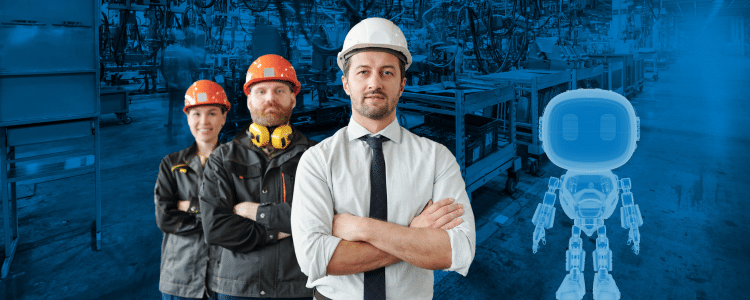An ERP implementation can be challenging for both small businesses and major enterprises alike. It can be even more difficult if your organization is global.
However, with the right strategy, you can avoid having to use our ERP expert witness services. Today, we’re detailing how to manage a global ERP implementation the right way.
6 Tips for ERP Project Success on a Global Scale
There are several different strategies that can help your global ERP implementation go as smoothly as possible. Let’s look at a few of the top ones.
1. Understand if You Need a Global ERP System
Deciding to implement a centralized ERP system across your global enterprise is no easy decision. For one, the decision to globalize or localize isn’t black and white. Every organization has different operational, organizational, cultural, regulatory, and financial considerations.
Here are a few signs that you need a global ERP platform:
- You’re currently running multiple ERP systems across various locations, and duplicate data is becoming an issue
- Local offices are manually reconciling financial and accounting data
Concurrently, you may be struggling to keep up with different tax schedules, regulatory requirements, and conversion rates. Does this mean a global ERP system isn’t right for you? Not necessarily. A centralized data solution can still address the localization challenges that multi-company organizations face.
2024 Clash of the Titans
SAP, Oracle, Microsoft, and Infor each have a variety of systems that can support data-driven decision making. We surveyed customers of these four vendors to find out what their selection and implementation process was like.
2. Implement Business Process Reengineering
International organizations, particularly those that acquire other companies, often have non-standardized business processes. Standardization allows these organization to scale for growth by consolidating business processes. Consistent processes drive operational efficiency and enable global visibility into operations.
At the same time, global organizations also need the flexibility to serve diverse customers, employees, economies, and regulatory bodies.
Before you automate your processes in a new ERP system, make sure you’ve struck the right balance between standardization and flexibility. This often entails business process reengineering (or at least process improvement).
We recommend working with stakeholders at each location to learn what’s currently working and what isn’t. During these conversations, you should also think about which processes should be localized to benefit individual offices, and which should be standardized.
2. Prioritize Excellent Communication
When it comes to dispersed operations, you can’t over-communicate ERP project updates and details. Local entities may be extremely resistant to globalized processes. They need to understand the reasons for transformation and how it will personally benefit them.
It’s important to create a communication plan that addresses how, when, and where you’ll communicate key updates. This includes adjusting your messages as required to accommodate different languages, cultures, and time zones.
Communication is just one part of organizational change management (OCM). As a whole, change management encompasses a variety of activities that focus on the people side of change, which is especially important in a global ERP implementation.
3. Plan Your Rollout Strategy
Determining the ideal time to go live with new ERP software can be challenging for any company. It becomes infinitely more difficult if you’re planning a simultaneous rollout across multiple global locations.
Most companies find that it’s much easier to roll out the system one location at a time. This way, if any issues occur, you can address them in smaller batches and prevent them from affecting consecutive phases.
4. Create a Template
While it’s important to allow for flexibility, it can help to create a global ERP template that standardizes elements such as:
- Configurations
- Fields
- Data
While business processes and requirements may differ by region, you don’t want to reinvent the wheel each time. With these basic elements in place, you’ll have a foundation to modify as necessary, so you don’t have to start from scratch.
5. Carefully Research Global ERP Vendors
Vendor analysis is a critical part of every ERP implementation. You want to make sure that the software solution you select can help you reach your short-term and long-term business goals.
During early presentations, it’s easy to get caught up in the bells and whistles but resist the urge to select a vendor based on their demo.
You need an ERP vendor that has deep experience implementing ERP across a global organization, and not every vendor is qualified. The solution they provide should also be agile enough to account for differences across locations, including currency and regulatory variances.
This is where references come into play. Ask each vendor for a list of references and don’t hesitate to check them. Ideally, you should hire a team that’s worked with global organizations within your same industry.
6. Allocate Appropriate Resources
A global ERP implementation requires the right hands on deck. The project should be a top priority for your company and shouldn’t be considered secondary to everyday business. If you treat it as such, you might not provide enough resources to adequately support it.
The people at the helm of the project should have an influential leadership role within your organization. Not only does this ensure that you can secure funding and C-suite support for the effort, but it also builds trust within your departments. This can help facilitate change management and make the transition easier for everyone.
Succeed at Your Global ERP Implementation
A global ERP implementation might seem daunting, but it’s doable.
While you might want to rush into it to maintain competitive advantage or keep up with shifts in customer demand, it’s important to ensure your business is prepared for this endeavor. The key is to standardize where possible, prioritize communication, and strategize your rollout.
By taking each location’s unique characteristics into account, you can set the stage for a successful project.
Our independent ERP consultants can help you overcome challenges you might face along the way. Contact us below to request a free consultation.














